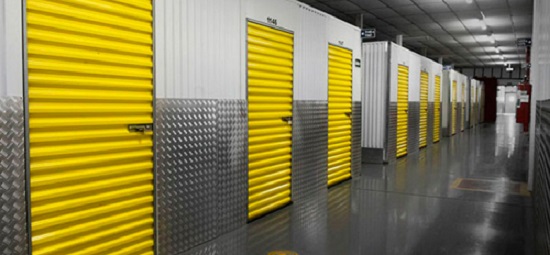Simple Workshop Storage Ideas

There are many types of workshop storage answers on the market and in this article I will describe what has worked well for me, but obviously the final choice comes down to individual needs.
Utilize wall space
Take a look around your workshop (or garage, we will use both these terms to mean the same thing). Where do you see the most empty space? If you are a disorganised kind of person most of your stuff will be on the floor whereas the walls will be relatively free.
It pays to make efficient use of wall space. If you visit any kind of home centre or depot you will immediately realise how well they take advantage of the wall space to display items. Getting things off the floor and into the air is one of the key principles when it comes to workshop or any other kind of storage problem solving.
Shelving
The most basic type of shelving one can use is horizontal brackets supporting lumber which creates a shelf. My preferred way to deal with shelving is to use simple angle iron with drilled or punched holes to create a frame using standard nuts and bolts and fix this securely to the wall. The fixings used will depend if your supporting wall is masonry or timber frame construction. Here's more information in regards to self storage containers look at our own web site.
You may want to consider building a frame using lumber instead of angle iron. If you have lightweight storage requirements for items such as sandpaper, power tools or small pots of paint or glue, you can use 2"x2" for the verticals and horizontals and 3/8" ply for the shelving. The horizontal spacing of the shelves should be designed so there is minimal wasted space between each shelf but make sure you allow at least two inches of clearance space between the top of the highest item and the bottom of the next highest shelf support.
Cabinets
Tall workshop storage cabinets can also be incorporated into your solution. If purpose made ones are too expensive then try and find some secondhand ones or use metal kitchen cabinets. If you cannot source metal ones then wooden cabinets will suffice.
If you also use base or low level workshop storage cabinets then fit them out with roll out shelving which will minimise the need to move things around to get to hard to access items at the back of the cabinet. Roll out shelves allow you to see what things you have available and to pick them out with ease.
Containers
For small items such as screws, nails, nuts and bolts and so on and for small hardware items you can use small stackable plastic workshop storage containers. Get some in different colours, sizes and shapes so you can readily categorise your items into different groups and you will also have an immediate visual clue as to where things are. For example you may decide to but all your screws in blue containers, nails in red containers and bolts in yellow ones. The colour coding is entirely up to you but keep it simple.
Some storage containers are designed with a built-in french cleat which will enable you to hang them onto a pegboard. If you set out the bins at a suitable vertical height so there is a gap between each one you will be able to stack at least five or six high and still be able to see what is inside each one. Some storage containers also have a slot holder on the front so you can write what the contents are on a label and install it on the container.
